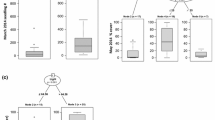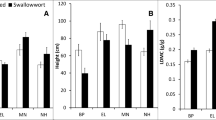Abstract.
A comparative ecological study of closely related invasive and non-invasive species, Senecio madagascariensis and S. lautus (Asteraceae), investigated what traits might confer invasive ability in very similar species. Life-history attributes of the weed S. madagascariensis were compared to five habitat-specific subspecies of S. lautus: S. l. alpinus, S. l. dissectifolius, S. l. lanceolatus and two forms of S. l. maritimus. Field populations of each taxon were monitored to compare their population ecology. Relative rates of phenological development were compared at a single location. Seed germination was studied in a laboratory experiment. Transplant experiments were conducted in a range of S. madagascariensis and S. lautus habitats to compare performance in different environments. In monitored field populations S. madagascariensis produced seedlings and reproductive cohorts more frequently, flowered for longer periods, produced more seeds and had fewer germinable achenes in the soil compared to S. lautus taxa. S. madagascariensis achenes had higher rates of germination than S. lautus in both light and dark conditions. S. madagascariensis was found to have higher rates of survival than S. lautus taxa in a range of habitats and to be faster to flower in both transplant and standard glasshouse environments. Overall S. madagascariensis performed better than S. lautus ecotypes in terms of seedling, growth and fecundity measurements and second best for achenes. Despite relatively good performance in terms of life-history traits there is no evidence that S. madagascariensis is invading S. lautus habitats. We speculate that physiological and morphological adaptations to specialised environments are a better explanation for success of Senecio taxa/ecotypes than generalised life-history trait performance. We suggest that invasiveness is essentially unpredictable, due to habitat/plant specific interactions between invader and area of introduction. In the absence of predictive theory, quarantine authorities should use a combination of methods to assess invasive potential including a database of known weeds, performance comparisons between congeneric natives and exotics in a range of habitats at proposed point of introduction and monitoring of introduced species to determine if they spread.
Similar content being viewed by others
Author information
Authors and Affiliations
Additional information
Electronic Publication
Rights and permissions
About this article
Cite this article
Radford, I., Cousens, R. Invasiveness and comparative life-history traits of exotic and indigenous Senecio species in Australia. Oecologia 125, 531–542 (2000). https://doi.org/10.1007/s004420000474
Received:
Accepted:
Published:
Issue Date:
DOI: https://doi.org/10.1007/s004420000474




